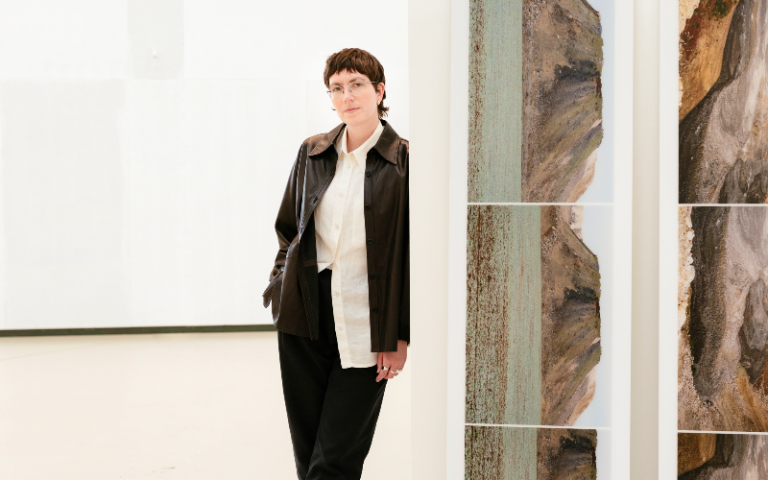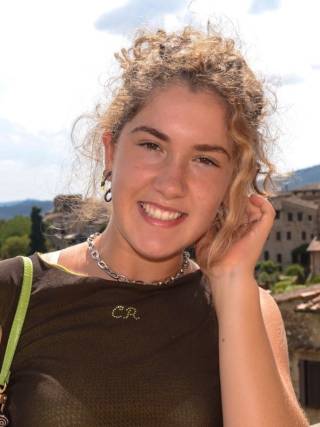Incongruity and History’s Present: An Interview with Dr. Gabe Beckhurst
Before we jump into specific questions, I would love to know more about your background and your relationship to the arts. When and how did your interest in the visual arts start?
I grew up in a rural area which meant I didn’t have many museums and galleries on my doorstep. While I was an ‘arty kid’, my interest in the visual arts really developed in my mid-teens when I realised that making art could be more than a passion project. At that point my school was able to offer access to a studio – it was only a room but I loved the feeling of entering a space where learning felt more open-ended than in more conventional classrooms. This experience encouraged me to enrol in a studio-based fine art undergraduate programme. There, the studio acted as a metronome and we were encouraged to be there every day. Over time I found myself gravitating towards art history and theory. In the tessellated practices of research and writing I am constantly manoeuvring between the past and present and I enjoy that tension. My relationship to the visual arts has shifted to the point where my interest now predominately lies in working with artists and in building relationships around shared interests and investments.
You have a background in art practice, theory and history. How have these stops along your journey informed your current approach to research?
In hindsight it’s easy to say my trajectory has felt organic. In the last few years I have been guided by the goal of making research an integral part of my professional life. This has led me to teach, as well as to write and curate exhibitions. On paper these fields can feel distinct from one another and somewhat impermeable, but in my experience there tends to be a lot of overlap in how projects come to fruition – at their best, academic research and curatorial practice are both highly collaborative. I’ve also long been interested in artistic practice as a conduit for historical and theoretical investigation. This is what brought me to art history, a field in which I could best explore the past as a powerful resource for the present, while being able to ask questions about how the historical past is constituted. Something I carry over from artistic practice is an interest in what happens when we take our lead from artists. I believe artists make better historians of us by exposing us to unorthodox approaches, not only at the point where research is shared or published, but at earlier formative stages as we try to situate our research within a broader context.
In pursuing a PhD, you deeply embed yourself in the artistic material you investigate in many ways, from discussing it with other researchers to spending hours looking at a photograph of a performance. What are your biggest takeaways from your postgraduate studies?
The nature of research at PhD level is typically characterised as ‘deep and narrow’. This is for good reason as you’re working towards becoming a specialist in your chosen field of study. As such, PhD study can give rise to a duality of feeling – the elemental pleasures of pouring across a gossipy curatorial note in the archive to the particularity of your investigations that distinguish you from your peers. One of my favourite aspects of research as a historian of modern and contemporary art has been the opportunity to spend time with archives that have been consciously put together by artists. It can be tempting to think of archives as strictly informatic, but such archives can tell us a lot about how artists made sense of their worlds and interpreted biography: a customised leather jacket as testament to their self-stylisation or an adolescent poem evidencing tender ambitions. Not all the textures of this experience will have a place in the PhD thesis but the wider knowledge gained is just as important. My biggest takeaway is to follow your nose and seek out the things that excite you even if they seem trivial because those details and the community you’ll build around them will sustain you for years to come.

In your PhD thesis, you discuss feelings of incongruity in ecocritical art. Could you tell us a bit more about ways of thinking more affectively and emotionally in history of art?
I came to the topic of incongruity in ecocritical art with the goal of working through the difficult emotions raised in reckoning with our degraded planet. My thesis took the 1970s as a key point of cultural and legislative formation and focused on the social and geopolitical context of the United States. For my thesis incongruity offered a useful framework for examining how artists have responded to some of the systemic challenges that emerged in the late 20th century. Rather than view incongruity as a deficit of action or effect with little value either for art history or our present, I was interested in how artists have worked with a range of media and approaches that diverge tonally from what is commonly considered ecologically consonant. This led me to examine performance works incorporating anachronistic historical guises and to quasi-nature documentaries that used deadpan comedy. I was interested in how these works simultaneously exposed the limitations of treating artists as social catalysts for change, whilst creating space for dialogue that challenges present cultural expectations for art.
In focussing on affect and emotion, I was influenced by what is often termed the ‘affective turn’. This turn isn’t exclusive to a humanities subject, though it has been prominently explored in queer theory and gender studies, which have been very instructive for me as an art historian. This is evidence of my interdisciplinary interests: I work at the hinge of art history and fields such as performance studies, cultural studies, queer and trans studies. Scholars such as Ann Cvetkovich, José Esteban Muñoz, Jennifer Doyle and Tina Campt have influenced how I think about affect in our field by encouraging us to look at feelings as shared cultural sensoria shaped by social and political upheaval, as well as how sensations raised by visual material or complex archives may be productively parsed through careful interpretation. Far from being insignificant, I believe such minor keys point to the lived experiences of making and sharing art, which I hold are indicative of the world-forming capacities of artistic practice.
I'm very interested in learning more about your current investigation of queer and gender nonconforming visualities in relation to temporal notions. What are the implications of thinking in multitemporal ways when researching artists and subjects which have been historically excluded.
I am in the early stages of a new research project that aims to foreground trans and gender nonconforming visualities in Britain from the 1970s onwards, taking the photographic and printed image as a site of departure. I hope to shift focus away from representational histories of trans and nonbinary existence in British art history and photography’s ties to visibility politics, to explore the aesthetic and formal innovations of an intergenerational group of artists working in relation to existing images, either taken from archives or popular media. I’m very interested in how time and temporality come to bear on the reconstitution of ephemera within new visual configurations. While aesthetic histories of collage and montage can be framed in terms of disjuncture, I’m keen to think about how such practices connect and revise ideas of presence, influence and inheritance. It is too early to review the implications of multitemporal methodologies in this project, but I will be thinking about how these approaches put pressure on paradigms of chronology and periodisation. In that sense I lean gratefully on pre-existing efforts in trans and queer studies to think carefully about how trans-conjoins with (art) history. This circles back to my wider belief of our present involvement with history, as opposed to thinking of history as belonging to and therefore restored from an isolated past.
As we approach essay deadlines, we forget how important it is to go see art in person. What is an object or performance that you've recently seen which has inspired or moved you?
Having first encountered them during her 2021–22 retrospective at Tate Modern, I recently had a second chance to see a couple of paintings from Lubaina Himid’s series Le Rodeur hanging in The Time Is Always Now, a group show curated by Ekow Eshun at the National Portrait Gallery. I am drawn to the way Himid’s paintings are full of narrative ellipses and hers is a practice I often return to in my teaching so the works feel familiar. But standing in front of them I was struck by their stately presence – a quality photography can never quite capture. It’s always affecting to revisit a work in person and be surprised to find you remembered it differently, like running into an old acquaintance and doing a double take. It was a poignant reminder that there’s always new resonances to be found.
 Close
Close


